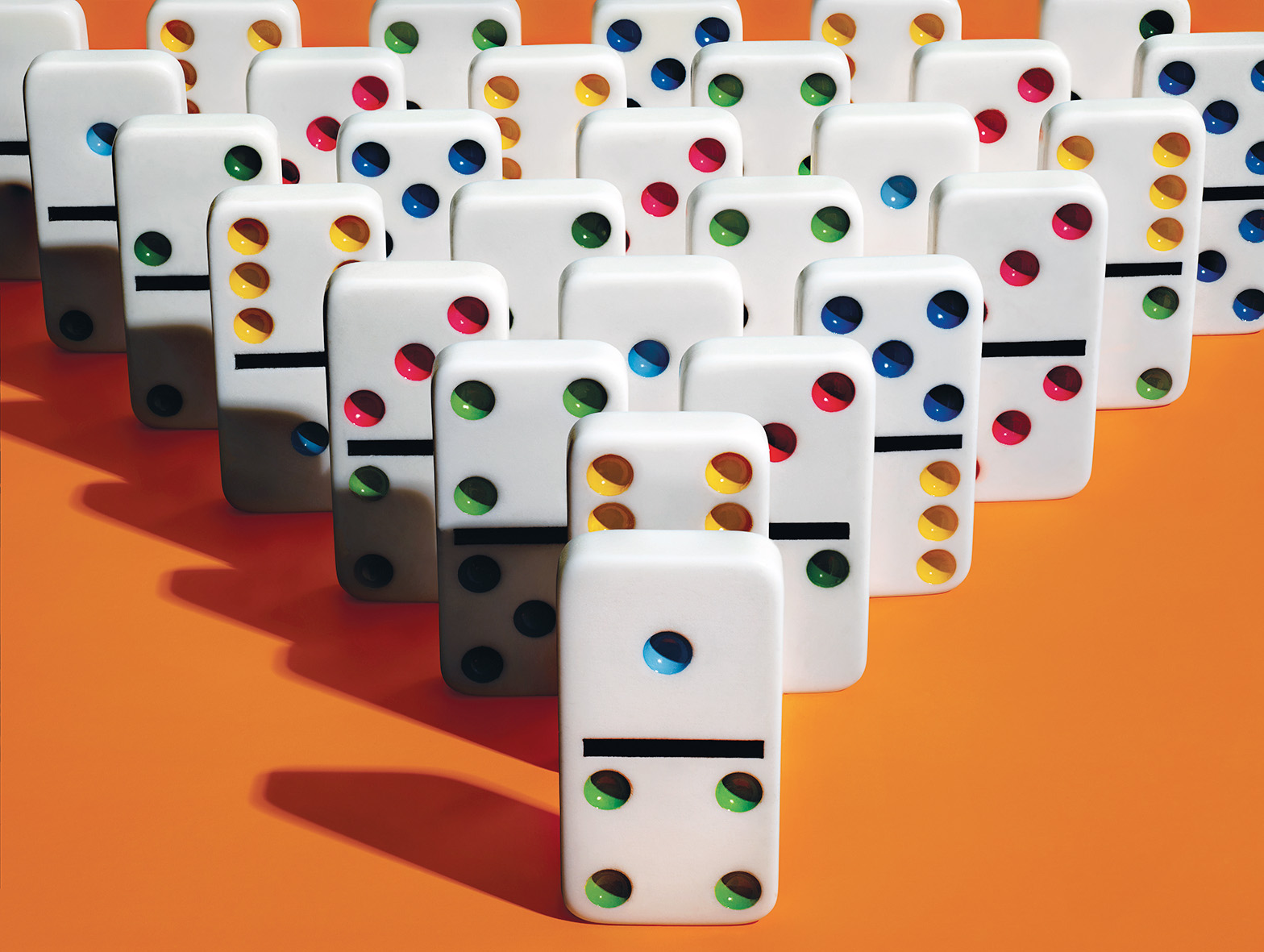
One million, one billion, one trillion. Humans are not good at judging the size of large numbers and don’t quite appreciate the increases between these three figures. A million seconds from now is just less than 11 days and 14 hours. A billion seconds is more than 31 years, while a trillion seconds would take us beyond 33,700 CE. The gap between a million and a billion feels comprehensible, yet the leap to a trillion seems far bigger. It is the difference between living to your early thirties and a time when humankind may no longer exist, as the stand-up comedian Matt Parker explains in Humble Pi, his sideways look at what happens when mathematics goes wrong.
Once a secondary school maths teacher in his native Australia, Parker argues that human brains are simply not wired to be good at mathematics “out of the box”. We were not born with any intuitive understanding of fractions, negative numbers or other mathematical concepts, but have to learn them over time. Some find it easier than others, but as Parker makes plain in his engaging and fascinating book, there is no escaping the fact that today’s world is largely built on mathematics: computers, gaming, finance, engineering, you name it – it’s all maths in different guises. So all sorts of apparently innocuous mathematical mistakes can have serious consequences.
There is no other area of maths, Parker admits, where he is as uncertain about his calculations as when he’s working out the chances of something happening. Fortunately the Nobel Prize-winning physicist Richard Feynman was a little bit more certain when he served on the panel that investigated the 1986 Challenger space shuttle disaster.
When the Nasa top brass said that each shuttle launch had only a one in 100,000 chance of ending in catastrophic failure, Feynman calculated that would mean there could be a shuttle launch every day for 300 years with only one disaster. When Feynman asked the engineers working on the shuttle what they thought the chances of disaster were on any given flight, they said anything from around one in 50 to one in 300. Of the 135 flights that were launched before the shuttle programme ended in 2011, two of them ended in disaster. That’s a rate of one in 67.5. Nasa’s management had come up with its figure, explains Parker, based on what it wanted rather than the hard evidence from testing.
Another tragic example of a mathematical mistake having dire consequences is the 1999 case of a British woman sentenced to life in prison for the murder of two of her children. The deaths could have been purely accidental as each year around 300 babies in the UK die unexpectedly from sudden infant death syndrome (SIDS). The outcome of the trial hinged on flawed statistics offered by the prosecution that implied there was only a one in 73 million, or 0.0000014 per cent, chance of two infants from the same family dying as a result of SIDS. After the trial the Royal Statistical Society expressed concern about the possible misuse of the figures and pointed out there was “no statistical basis” for the number cited in court. In 2003 the conviction was quashed.
What was the maths error that led to this miscarriage of justice? The prosecution calculated the probability of a cot death in the woman’s family to be one in 8,543, written as 1/8543. The fatal mistake, as Parker explains, was to multiply 1/8,543 by 1/8,543 to determine the probability of two cot deaths in the same family. To do so was to treat them as independent of one another.
Mathematically speaking, if two events are independent, then we can multiply their probabilities to find the chance of both happening. For example, the chance of pulling an ace of hearts from a deck of cards is one in 52 and the chance of getting heads after a coin toss is one in two. We know the outcome of the coin toss cannot affect the result of picking the card, so we can multiply ½ by 1/52 to get the probability for both happening as one in 104. However, probabilities change if linked factors have already been selected for, as Parker makes clear. Since SIDS involves possible genetic and environmental factors, the probability of it happening twice in the same family is much higher than it happening even once in another family because the deaths are not independent. It’s a fact an expert witness failed to take into account when doing a calculation that sent an innocent woman to prison for three years.
On a more light-hearted note, Parker explains how an Amazon seller’s algorithm managed to list The Making of a Fly, a 1992 book about genetics, at $23,698,655.93 (plus $3.99 postage), why London’s Millennium Bridge wobbled and how JP Morgan lost an estimated $6bn because someone added two numbers together instead of averaging them. He lays out the difference between sequential and overlapping runs of heads and tails in coin flips and the difference between transitive and non-transitive relations, and explains how to use a set of non-transitive dice to win drinks and money off your friends and family. To add to the fun, Parker has also left three deliberate mistakes in the book and asks the reader to let him know if they catch them all.
Manjit Kumar’s books include “Quantum: Einstein, Bohr and the Great Debate About the Nature of Reality” (Icon)
Humble Pi: A Comedy of Maths Errors
Matt Parker
Allen Lane, 336pp, £20
This article appears in the 15 May 2019 issue of the New Statesman, Return of the Irish question





